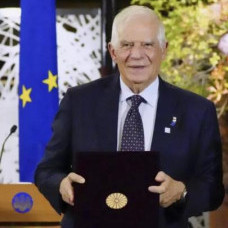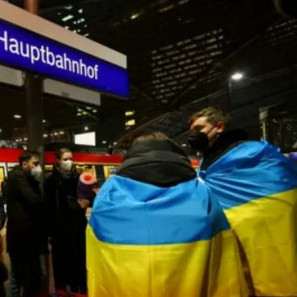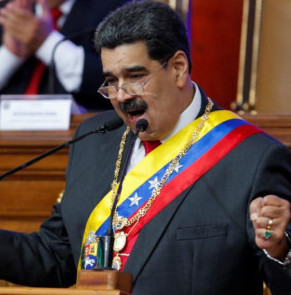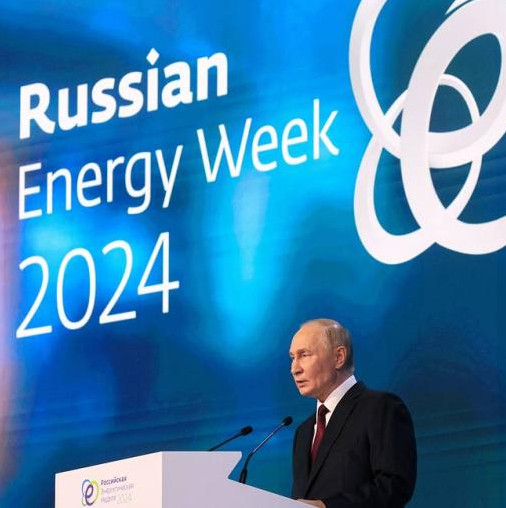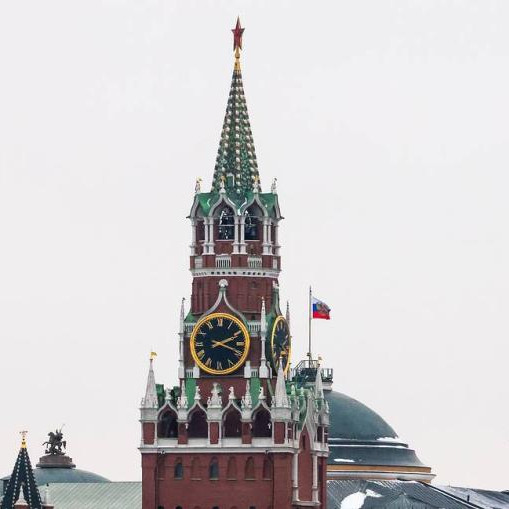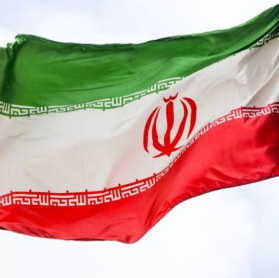Let us explain the heading without long boring statistics. The past few years’ surveys suggest that some 51 to 67% of Russia’s citizens are interested in keeping the CIS up. This opinion is shared by around 50% of the former Soviet republics’ residents, save the Baltics. The key rational pro-CIS argument is the no-visa travel possibility it provides; the “irrational” one is to preserve the “shared cultural space.” As for the latter argument, half of the CIS advocates in all the post-Soviet republics are willing to take on the “big” or “little”-brother roles, respectively. Politicians do not mention it openly, but they can sense it nevertheless. When randomly asked to name at least three CIS countries, 83% of people on the street – given they know what the acronym stands for – name Belarus first. Curiously, a similar poll in Donbass (Ukraine) revealed that 40% of Ukrainians also mentioned Belarus. Around 15% of Russians have relatives in Ukraine, while 42% of Ukrainians, in Russia. Political scientists in Georgia, Armenia and Kazakhstan similarly estimate that CIS will “live” as long as Russia and Ukraine are together. Therefore, the “irrational” reason to keep the CIS up is still there. The rational one is not so obvious.
On the one hand, the EurAsEC, an EU of our own, and around a dozen other post-Soviet unions emerged on the basis of the CIS. On the other, that commonwealth was not so much meant to serve as a new integrating force of the post-Soviet space (if it were, then what was the use of dissolving the USSR, one might as well ask), but rather as a “soft divorce” instrument. Therefore, if no one but Moscow and Minsk plan to reunite, what do we need that instrument for today? The pros and cons merge to form a somewhat contradictory attitude. The recent conflicts involving Moldovan wines in Russia and Russian gas in Belarus are an eloquent example of that, and so are the problems of illegal migration, drugs trafficking, state border demarcation and the forced privileged transit regime. These conflicts are hard to settle within the CIS framework; even more so since they get bogged down in red tape. That is why the same agenda travels from one summit to another, and the CIS reform concept is gradually ousted by its trademark slogan. This time, there are plans to finalize the reform concept by the mid-summer of 2007 and present it at the Dushanbe summit or the St. Petersburg “no-necktie” meeting.
There is an additional shade of meaning to this heading. It has to do with the West-CIS relations. In fact, the West shows a better attitude to each of the CIS members taken separately than to the CIS as a whole. On the one hand, the West tends to forgive many “violations of democracy” in the post-Soviet space, until we make no attempt to revive the USSR, as it would jeopardize the efforts they had made. On the other hand, who says eastern integration is worse than western one? Who has the right to judge? Well, comes a wry answer, try it and see how we’ll treat your Commonwealth like we do Lukashenko alone now…
NATO seems to find its road to Latvia as long and winding as the CIS, the highway to Minsk. It is highly probable that no one had been aware of the precise Riga summit agenda. Otherwise, how can one explain the confirmation of Georgia’s and Ukraine’s NATO-related future by the US Senate only days to the Riga summit? It looks like this prospect had been considered earlier, and so was NATO’s partnership with Finland, Sweden, Japan, Australia and South Korea. First steps must have been made along this road; the last ones are fraught with a collapse of the whole international relations structure both the East and the West had been building since the Iron Chancellors. Will the West now benefit from opposing itself openly to Russia and China? With the billion-strong Islamic world watching closely? And with NATO’s invitations casually slipped to the “Balkan Mac” (Macedonia, Albania and Croatia), simple logic suggests that Croatia is deemed up to NATO standards now, and what’s more, NATO = Albania.
“Planting democracy” is a pretext, as is clear to the “recipients” of such democracy. But even now, with the neutrality of its potential vis-à-vis, the world leader achieved nothing in Iran and North Korea, which seem to expose themselves intentionally to a first strike. But what if the “recipients” unite? There is nothing left to add about Iraq; only Afghanistan can be worse. Therefore, 2007 is announced the year of NATO-Russia cooperation – prepare Matreshka-dolls!
The calculation of costs required the presence of NATO heads as much as the Moldovan wine scandal, of the CIS leaders. Parity has been reached here: the US has been demanding that its allies raise military expenditures to 2% of the DGP for the past 15 years (3.7% in the US). They respond just like our own allies do when discussing customs regulations. It is worth noting that both the former and the latter managed to make an easier deal with the WTO. As for the invitation of Serbia, Montenegro and Bosnia to NATO’s Partnership for Peace Program, in terms of its political outcome, it can be likened to an almond-bitter tinge in an exquisite cocktail. At a farewell reception. Cat Matroskin wouldn’t have liked that.
NATO Secretary General Jaap de Hoop Scheffer opened its 57th Summit by warning Georgia and Ukraine against nourishing illusions, as it would be a NATO transformation summit, not an expansion one. After agreeing that Iran and North Korea are indeed making some nuclear devices but disagreeing on what has to be done about it, the conferees switched to Afghanistan. If one leafed through an old diary of a Soviet soldier who fought in Afghanistan, one would come across nostalgic coincidences, including the names of kishlaks [villages] and dates. On November 28, 1988, the Shuravi conducted one of the bloodiest operations of the Afghan war, in kishlak Kishkinahud, Kandahar Province. On November 28, 2006, NATO in fact admitted that south-west Afghanistan – Kandahar – is out of their control. Twenty years ago, the “people’s power” controlled around 20% of roads and defenses, at least in the daytime, along with those who used them.
In the present campaign, daytime in Afghanistan is more like nighttime in the Shuravi times: an international force of 17,500 soldiers from 37 countries can hardly ensure their own safety, losing 10 to 15 men monthly (121 in January-November 2006). This past October they reported 200 Taliban soldiers killed and 16 (!) who “voluntarily laid down their arms and started a peaceful life.” For comparison, the “old diary” reported 50 people killed in Kandahar and Gerat provinces in October 1988, while 334 agreed for “national reconciliation.” More than 1,600 liters of gasoline was “written off” (distributed), along with 400 towels, 200 pairs of rubber galoshes, etc. Some 30 families were helped to bring home discarded wooden munitions boxes from the dump pile. Well, it is possible that those who did need galoshes, acquired them back in 1988, and have no need for “national reconciliation” now…
But they are trying the international community’s patience. Drugs account for 40% of the local GDP: Afghanistan annually produces 7,000 tons of heroin. The international force, or rather British soldiers, has made only one “show” confiscation. They confiscated 150 kilos of drugs leaving the locals in great surprise by not paying for the lot… Those surprised workers must have headed for the mountains then – to seek truth and ask for Allah’s counsel, clutching their faithful Kalashnikovs as usual. Incidentally, Afghan president Karzai (former New York carpet dealer) has a brother, Ahmad Vali, who is one of the key drugs exporters in the Middle East. Cat Matroskin would say he’s ungrateful. The Riga conferees said the international contingent needs to be increased by 10,000.
So what was the NATO summit about? It was about demonstrating how far they advanced to the east. Why has the Russian president ignored it? For the same reason. Let us advise diplomats here: it would be great if they convened the next Shanghai summit in Teheran, the capital of an observer nation in the SCO, and invite president Bush of the US. Together they could mark the 30th anniversary of the American hostage-taking. And Cat Matroskin’s birthday.
